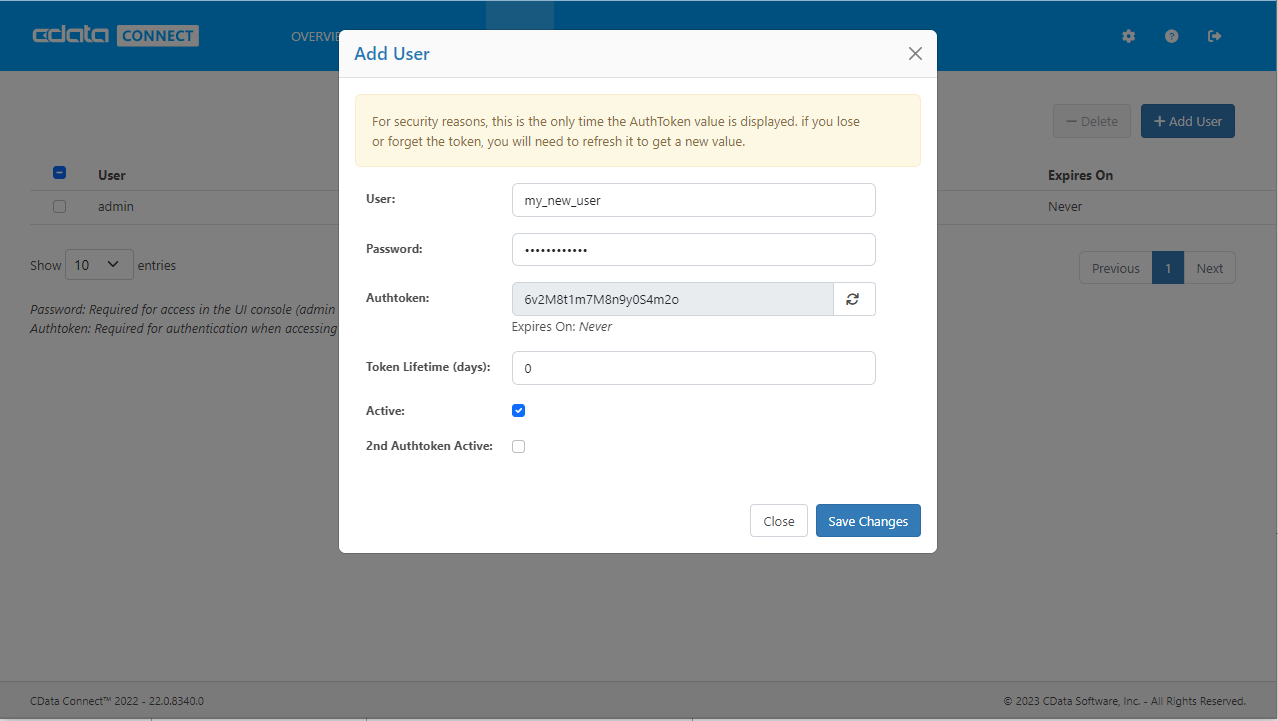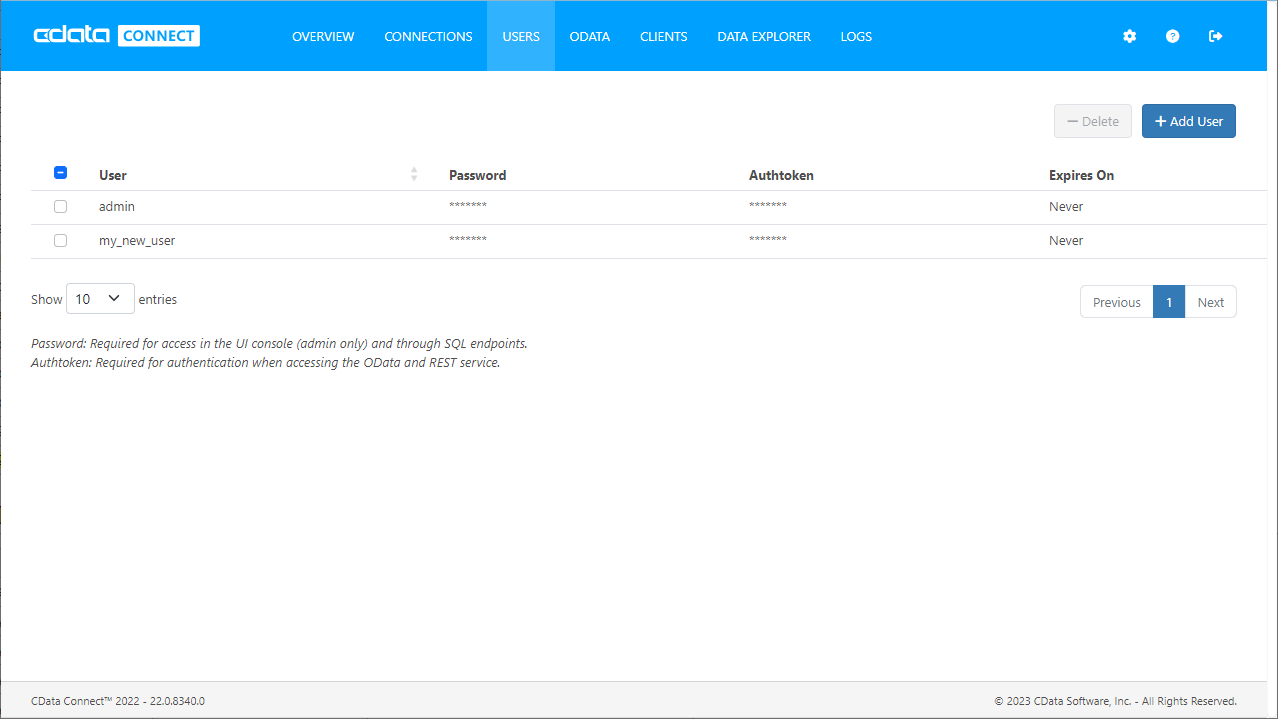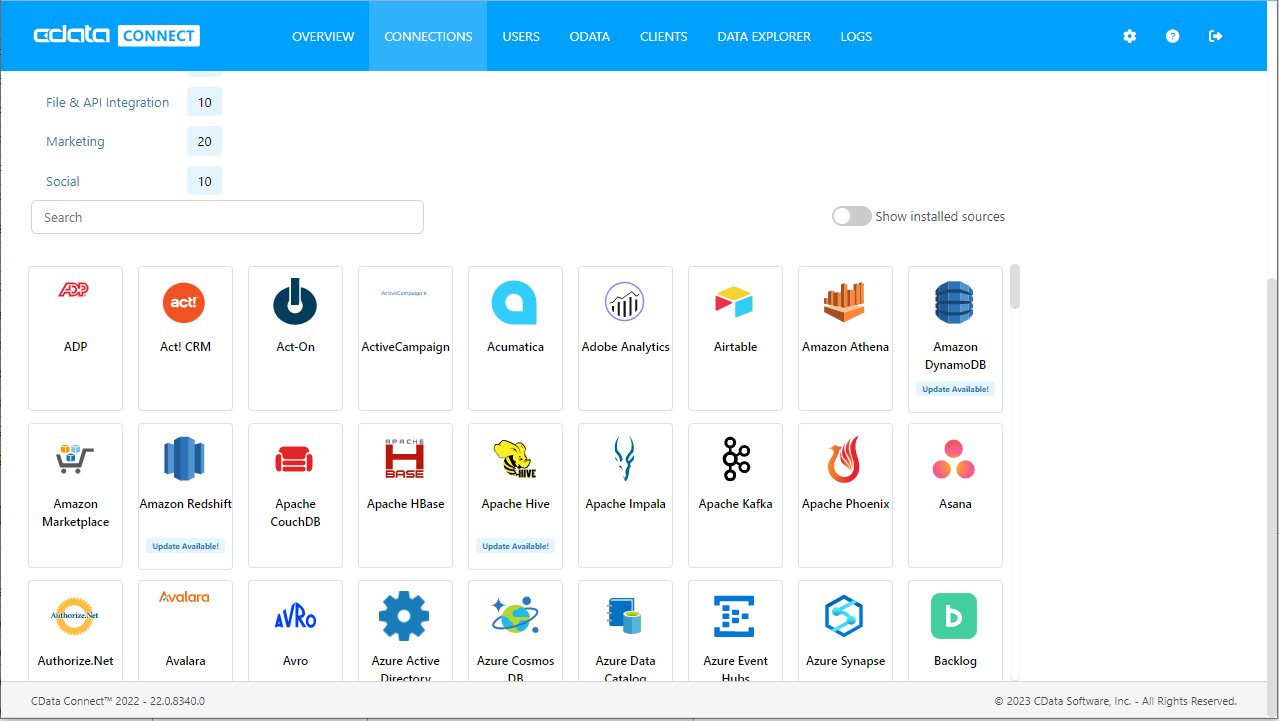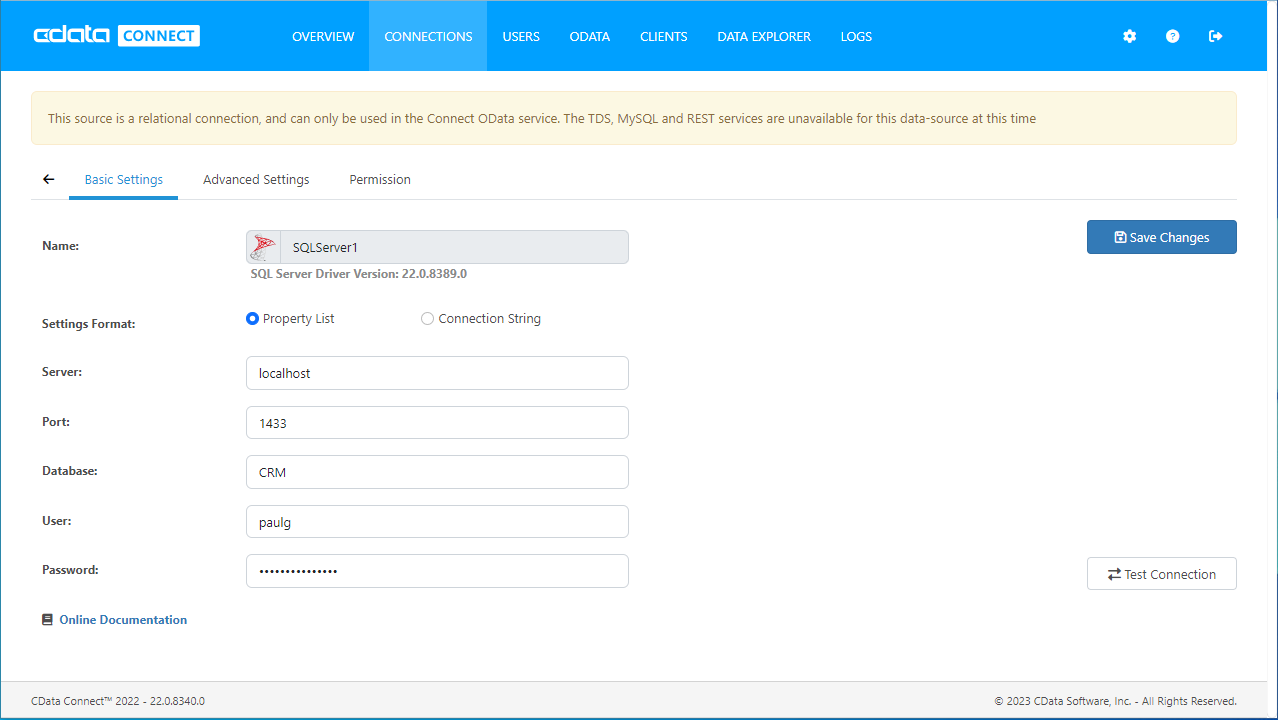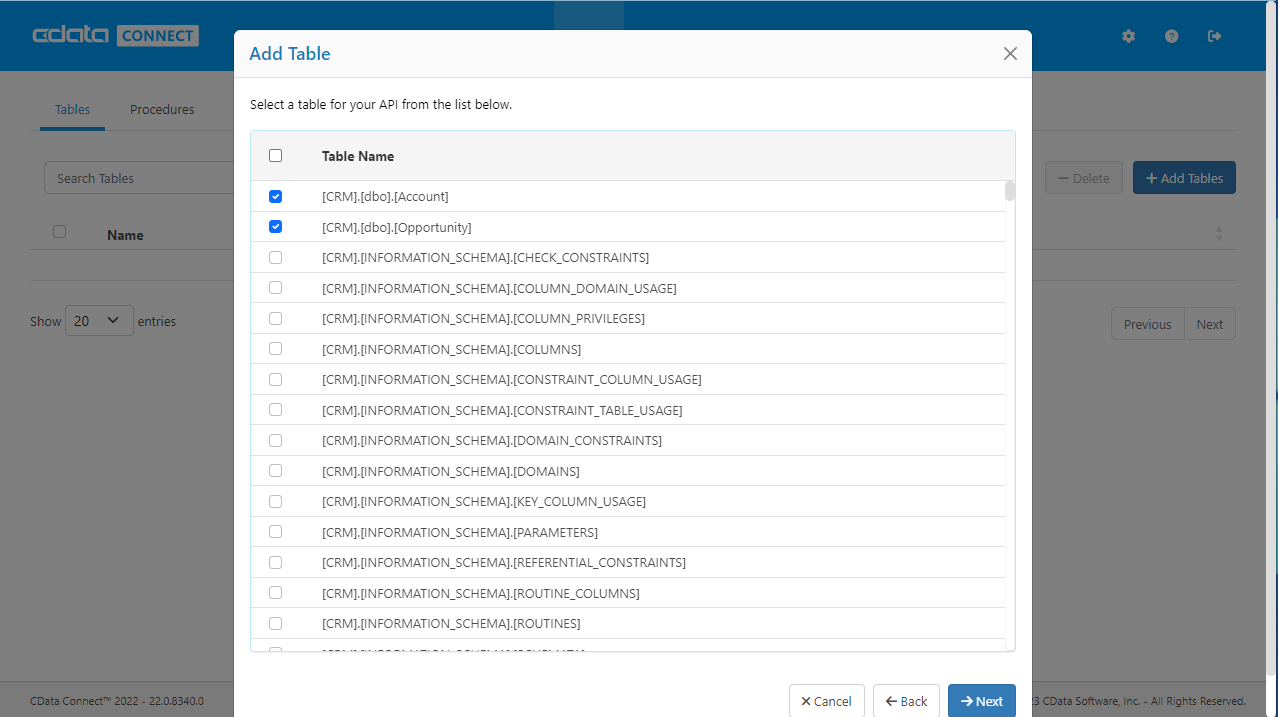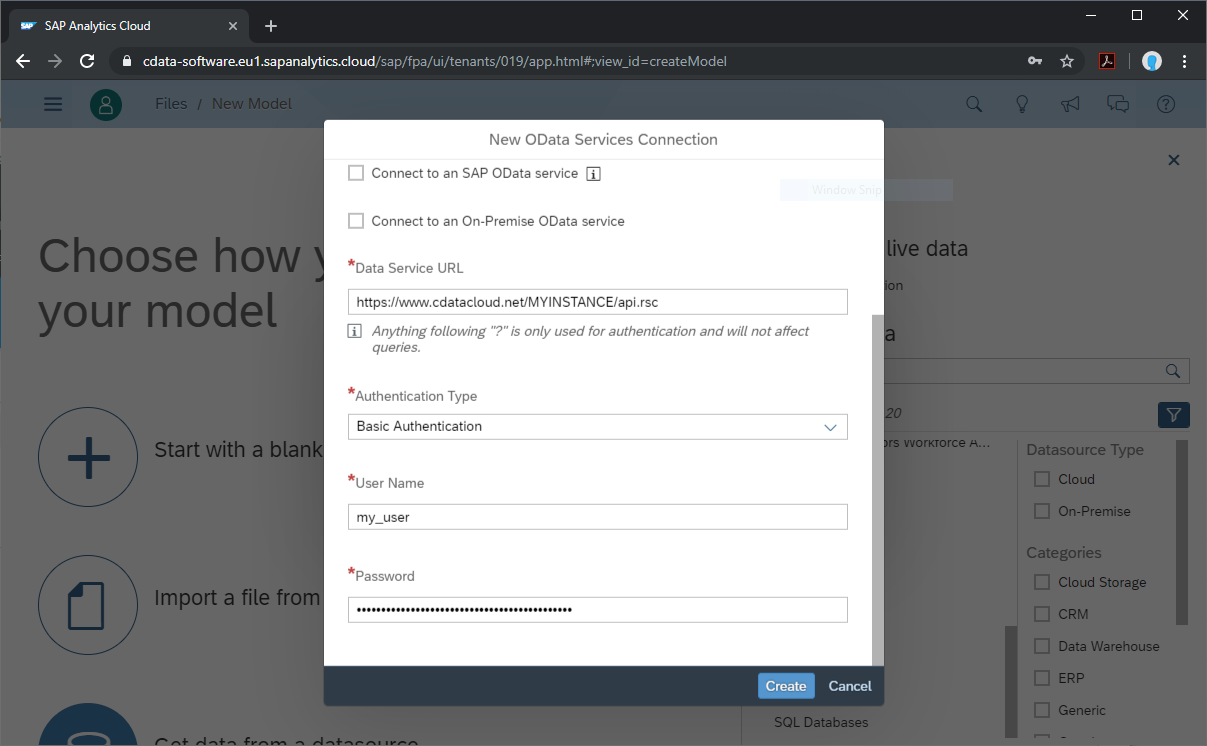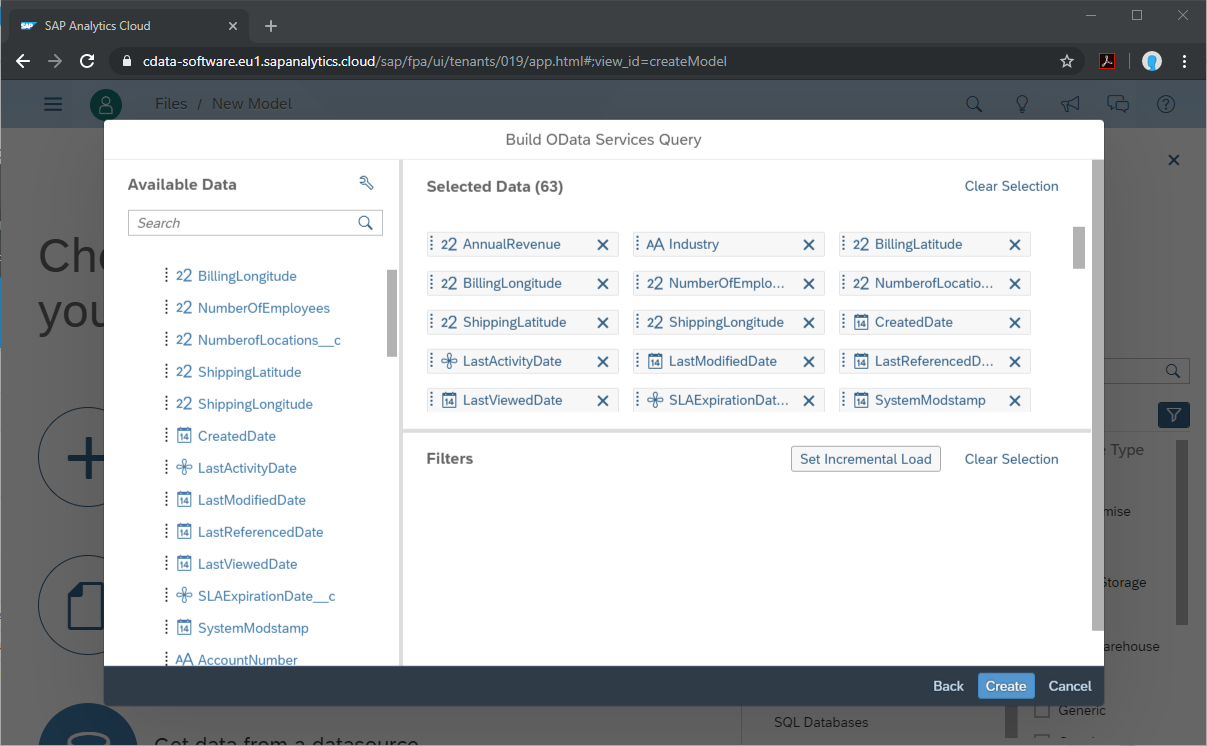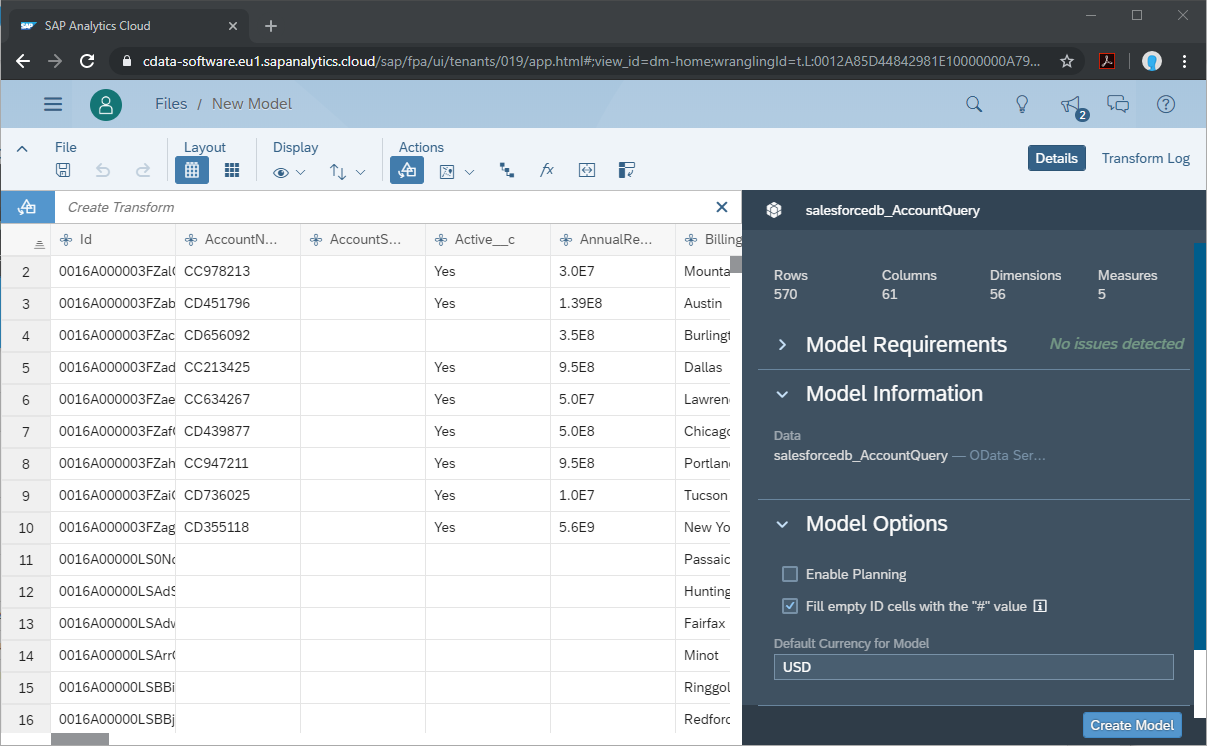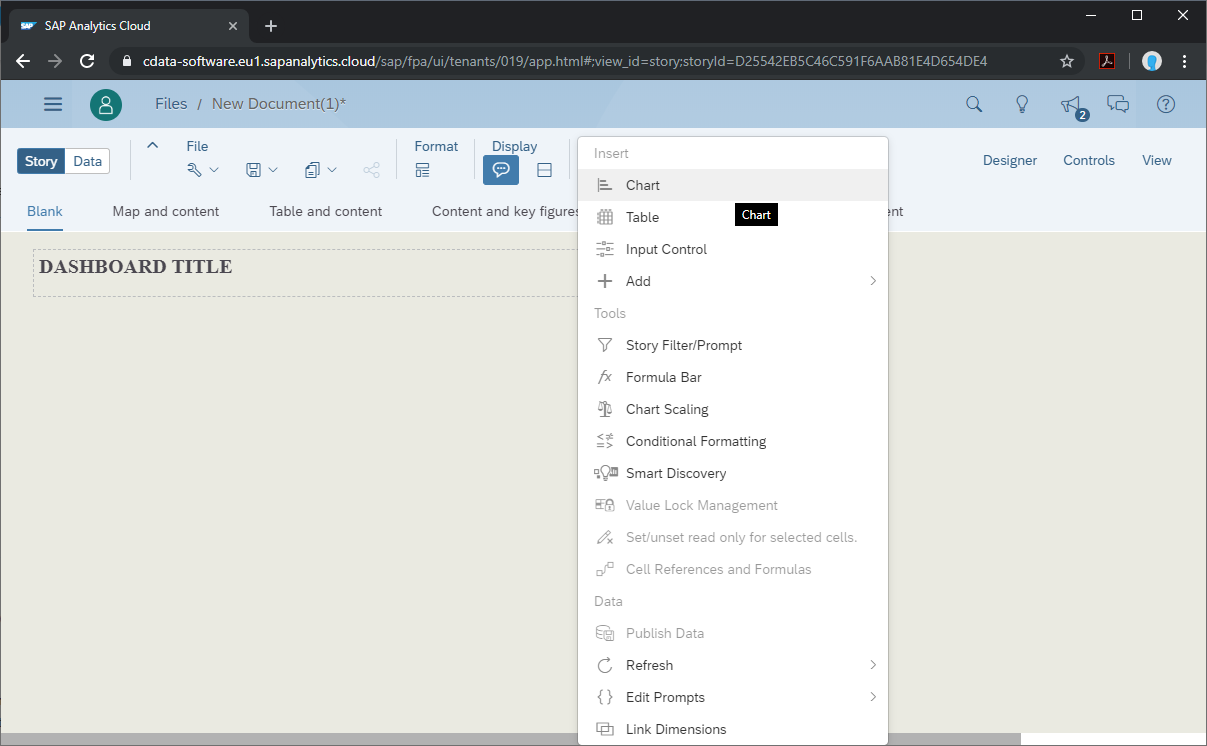Discover how a bimodal integration strategy can address the major data management challenges facing your organization today.
Get the Report →Analyze LDAP Objects in SAP Analytics Cloud
Use the CData Connect Server to create an OData API on top of LDAP objects and visualize LDAP objects in SAP Analytics Cloud.
SAP Analytics Cloud is a cloud-based business intelligence platform. The CData Connect Server creates a virtual database for LDAP and can be used to generate an OData API (natively consumable in Analytics Cloud) for LDAP. By pairing SAP Analytics Cloud with the CData Connect Server, you get direct connectivity to all of your SaaS and cloud-based Big Data and NoSQL sources — no need to migrate your data or write your integrations. Simply connect to Connect Server as you would any other OData service and get instant, consolidated access to all of your data.
In this article, we walk through connecting to LDAP in Connect Server and connecting to Connect Server from Analytics Cloud to create a model and build a simple dashboard.
Configure Connect Server to Connect to LDAP
To connect to LDAP objects from SAP Analytics Cloud, you need to configure LDAP access from your Connect Server instance. This means creating a user, connecting to LDAP, adding OData endpoints, and (optionally) configuring CORS.
Add a Connect Server User
Create a User to connect to LDAP from Analytics Cloud through Connect Server.
- Click Users -> Add
- Configure a User
![Creating a new user]()
- Click Save Changes and make note of the Authtoken for the new user
![Connect Server users]()
Connect to LDAP from Connect Server
CData Connect Server uses a straightforward, point-and-click interface to connect to data sources and generate APIs.
- Open Connect Server and click Connections
![Adding a connection]()
- Select "LDAP" from Available Data Sources
- Enter the necessary authentication properties to connect to LDAP.
To establish a connection, the following properties under the Authentication section must be provided:
- Valid User and Password credentials (e.g., Domain\BobF or cn=Bob F,ou=Employees,dc=Domain).
- Server information, including the IP or host name of the Server, as well as the Port.
BaseDN: This will limit the scope of LDAP searches to the height of the distinguished name provided.
Note: Specifying a narrow BaseDN may greatly increase performance; for example, cn=users,dc=domain will only return results contained within cn=users and its children.
![Configuring a connection (SQL Server is shown).]()
- Click Save Changes
- Click Privileges -> Add, and add the new user (or an existing user) with the appropriate permissions (SELECT is all that is required for Reveal)
Add LDAP OData Endpoints in Connect Server
After connecting to LDAP, create OData Endpoint for the desired table(s).
- Click OData -> Tables -> Add Tables
- Select the LDAP database
- Select the table(s) you wish to work with and click Next
![Selecting a Table (SQL Server is shown)]()
- (Optional) Edit the resource to select specific fields and more
- Save the settings
(Optional) Configure Cross-Origin Resource Sharing (CORS)
When accessing and connecting to multiple different domains from an application such as Ajax, there is a possibility of violating the limitations of cross-site scripting. In that case, configure the CORS settings in OData -> Settings.
- Enable cross-origin resource sharing (CORS): ON
- Allow all domains without '*': ON
- Access-Control-Allow-Methods: GET, PUT, POST, OPTIONS
- Access-Control-Allow-Headers: Authorization
Save the changes to the settings.
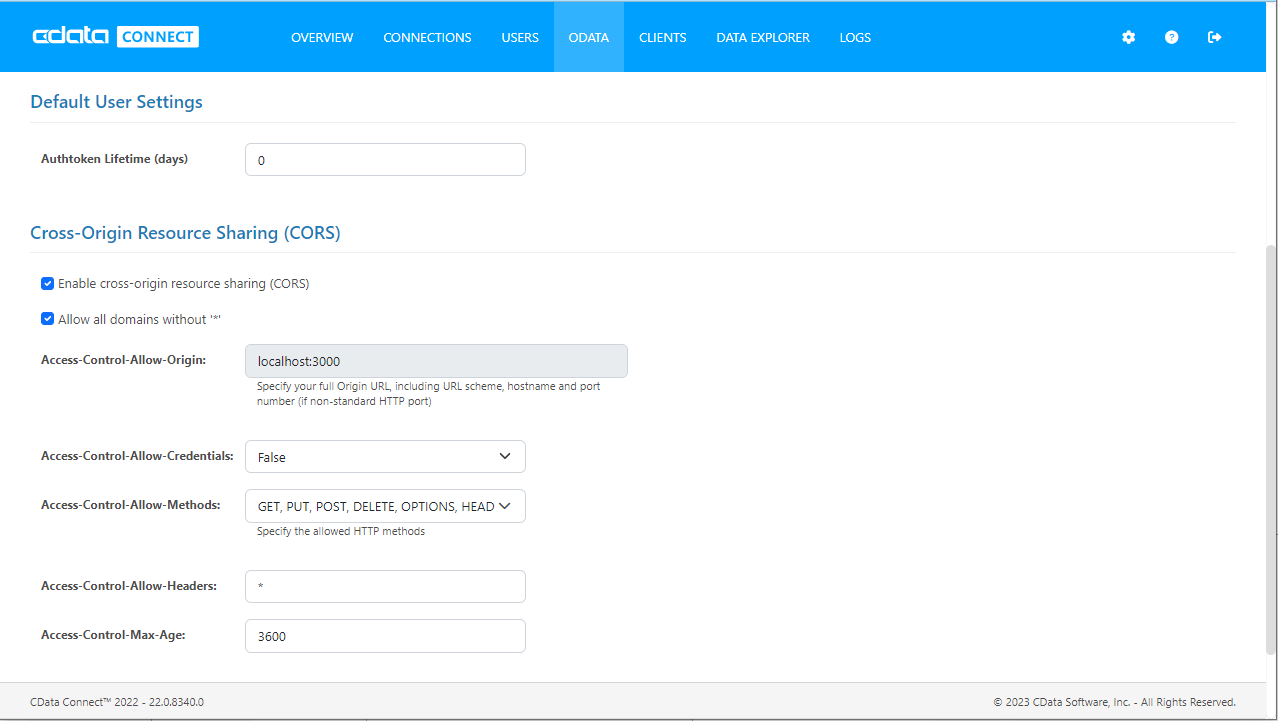
Create a Model of LDAP Objects in SAP Analytics Cloud
With the connection to LDAP configured and the OData endpoint(s) created, we can create a Model for LDAP objects in SAP Analytics Cloud.
- Log into your Analytics Cloud instance and click Create -> Model from the menu.
- Choose "Get data from a datasource" and select "OData Services"
- Choose an existing connection to your Connect Server OData or Create a new one:
- Set "Connection Name"
- Set "Data Service URL" to the Base URL for your OData API (typically: CONNECT_SERVER_URL/api.rsc)
- Set "Authentication Type" to Basic Authentication
- Set "User Name" to the Connect Server user you configured earlier
- Set "Password" to the Authtoken for the above user
![Creating a new OData Services Connection]()
- Choose "Create a new query" and click Next
- Name the Query, select an OData endpoint (like ldapdb_User) and click Next
![Choosing a Connect Server OData endpoint to query]()
- Drag the columns you wish to work with into the Selected Data workspace and click Create
![Selecting fields (columns) from the OData endpoint]()
- At this point, a Draft Data source is created; click the draft to finalize the model
- Perform any transformations, including creating calculated dimensions, location dimensions, and combining data sources, then click Create Model
![Finalizing the model]()
- Name your model and click OK
Build a Dashboard in SAP Analytics Cloud
With the model created, you are ready to create a dashboard in SAP Analytics Cloud based on LDAP objects.
- From the menu, click Create -> Story
- Click an SAP Analytics Template (this article uses the "Dashboard" template)
- Choose a layout and click Apply
- From the More menu, select a visualization to insert (Chart)
![Inserting a visualization]()
- Select a model to visualize
- Select a structure and the required Measures and Dimensions
- Save the story
![Saving the Story]()
More Information & Free Trial
Now, you have created a simple but powerful dashboard from live LDAP objects. For more information on creating OData feeds from LDAP (and more than 200 other data sources), visit the Connect Server page. Sign up for a free trial and start working with live LDAP objects in SAP Analytics Cloud.






